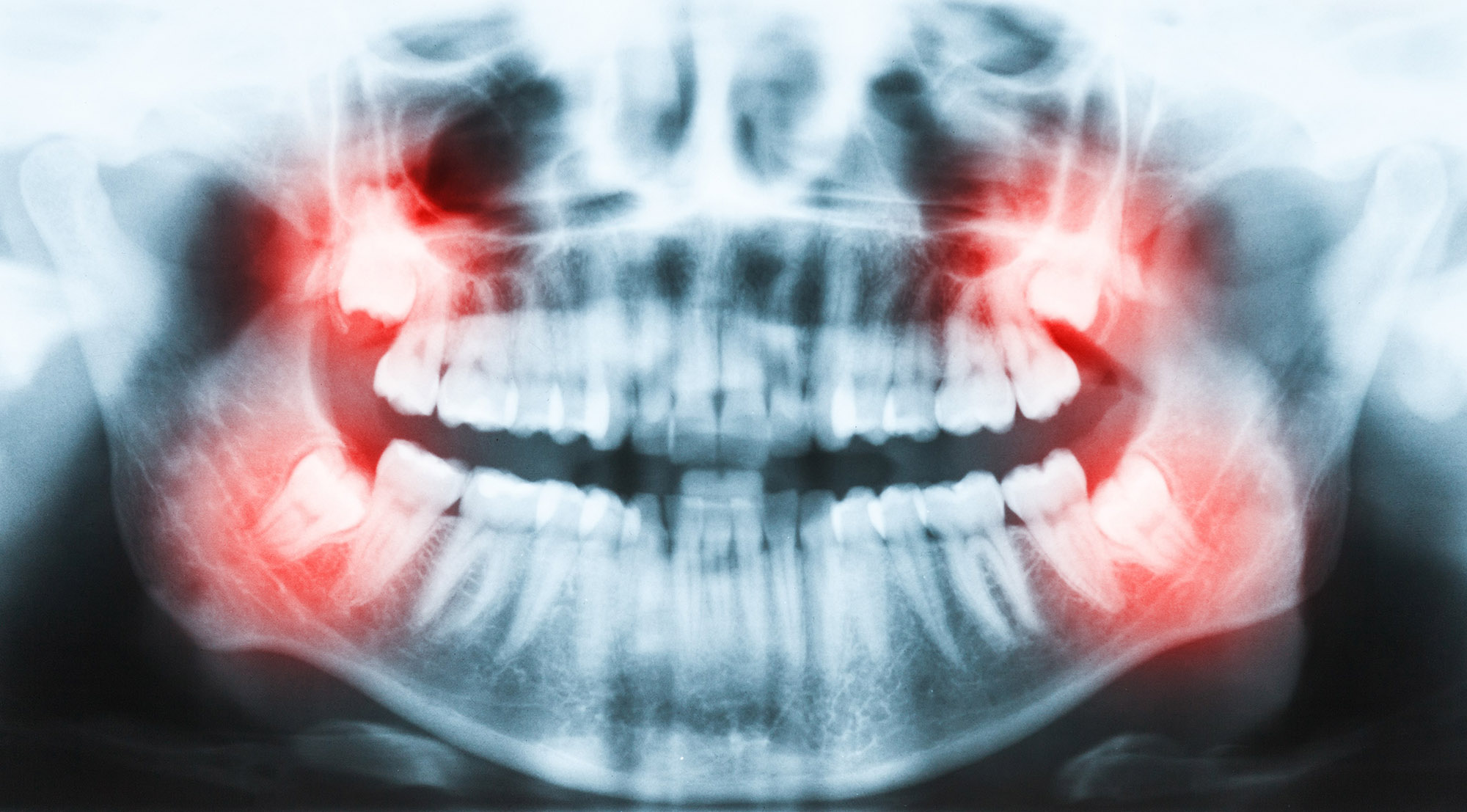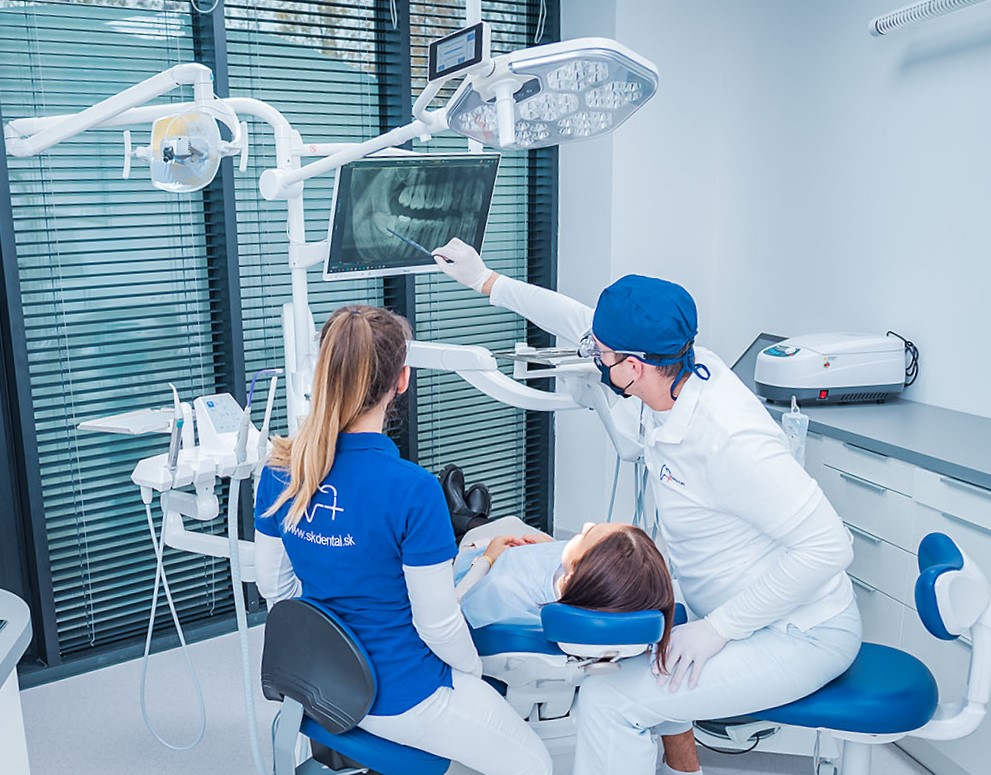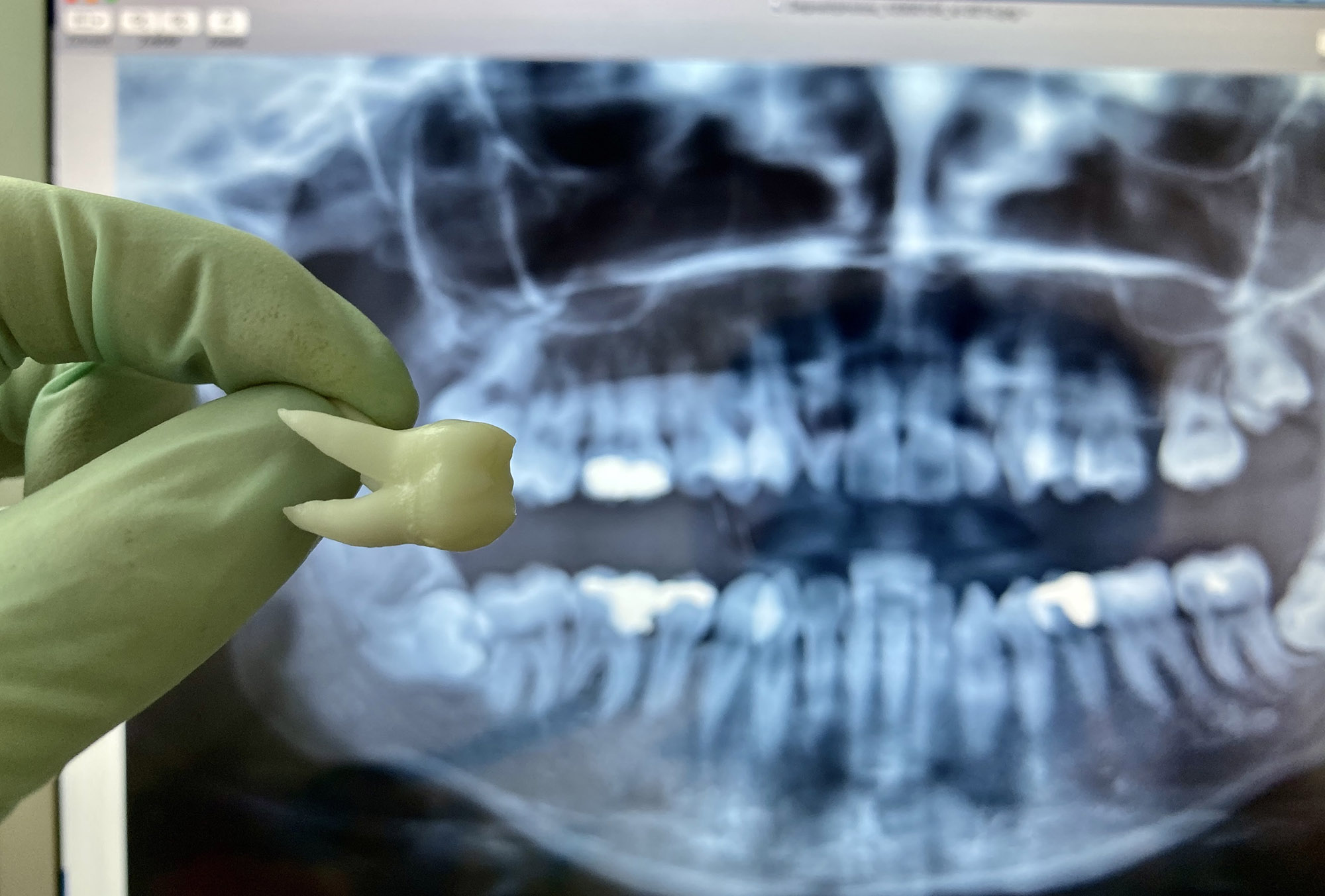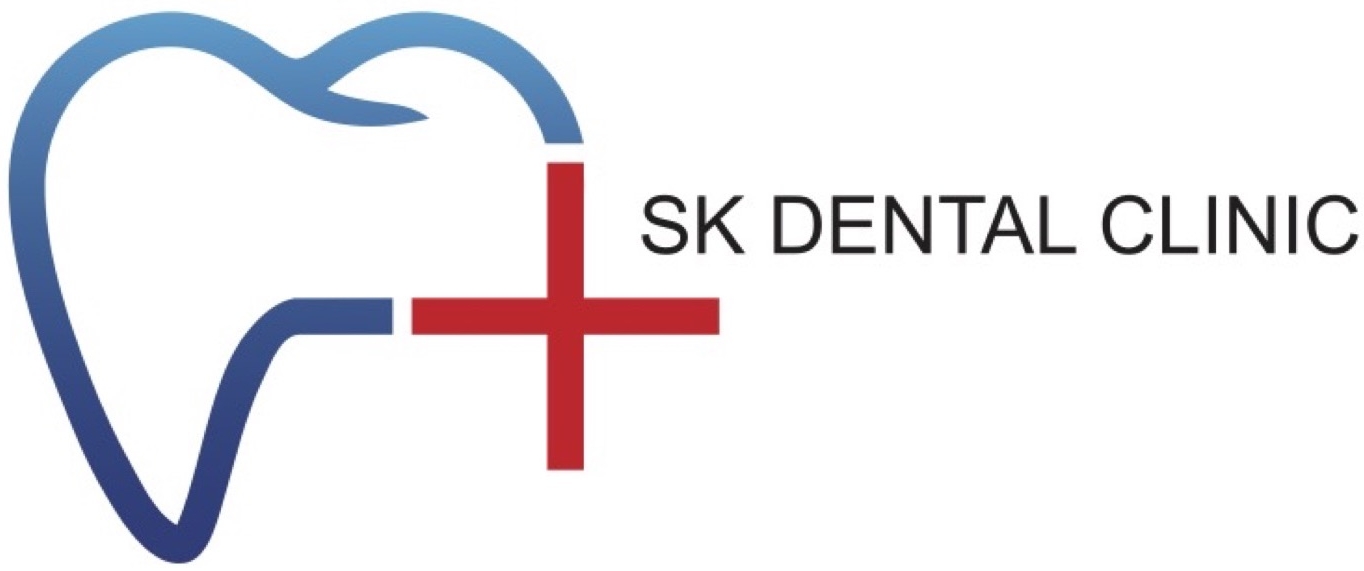Wisdom tooth extraction
Third molars, generally known as wisdom teeth, are the last permanent teeth that mostly erupt between 17 and 25 years of age. Statistically, up to 20-25% of patients never develop wisdom teeth at all, therefore they do not have to worry about extraction of these teeth. However, the rest of the population has either all or at least some of the wisdom teeth formed. Thanks to an X-ray, your dentist can clearly assess whether your wisdom teeth are present, what condition they are in and whether they would protrude the gum or not. For that purpose, a suitable panoramic image is the OPG, or orthopantomogram. The dentist can also use this image to assess the presence of a tooth bud / tooth in the gum, its placement, orientation, the expected direction of protrusion and the probability of this happening at all, depending on the spatial conditions in the jaw. However, a physical examination and visual assessment of the condition of the oral cavity, teeth and the specific wisdom tooth is an integral part of examination.

There are various ways of tooth formation in an oral cavity, as well as various stages of tooth eruption (completely, partially or not at all). In the first case, the tooth is fully erupted, integrated into the occlusion and with completely visible crown. With a partially erupted tooth, we can see only a part of the crown in the mouth, while the rest of it is covered by the gum. This is the case that very often creates acute problems. The third case is the so-called impacted wisdom tooth (not erupted) that is not even partially visible in the oral cavity and is completely covered by the gums, a part of the bone or completely stuck in it.
What to do in such cases?
The first case is easiest. With proper dental hygiene on the part of the patient, it is unnecessary to extract the wisdom tooth and the dentist may consider leaving the tooth in place. In this case, the doctor assesses several factors as well as the presence of a wisdom tooth on the opposite side. If the patient is unable to brush the wisdom tooth well enough, the crown gets covered by dental plaque or tartar that includes bacteria causing tooth decay, or if the tooth is hardly accessible for proper hygiene, the dentist may decide to extract it.
The second case is usually the main cause of problems. These can be manifested, for example, by sharp stabbing pain, sometimes shooting all the way into the ear, by the swelling of gums or face, difficulties with opening the mouth, swollen lymph nodes under the jaw, fever, etc. The reason for this is the incompletely erupted crown of the tooth and the partial gingival cover placed over it, which together can form the so-called dental granuloma. This is where leftover food, dental plaque, and bacteria can accumulate, leading to infection and gingival defence mechanisms in the form of redness, swelling and pain. In this case, the dentist usually suggests tooth extraction. If not carried out despite the doctor’s indication, the patient’s problems may recur.
In case of a completely impacted wisdom tooth, the difficulties usually do not become acute overnight. The doctor assesses the situation as well as the presence of inflammatory processes and other pathological conditions, and considers arranging a scheduled extraction.

What happens during the extraction?
Tooth extraction means removing the tooth from the alveolus (tooth socket), that is, pulling it out. This procedure is performed exclusively under anaesthesia, usually local anaesthesia. When the tooth is completely or at least partially visible in the oral cavity, the extraction may be as smooth as when pulling out any other tooth. However, if your dentist suggests surgical tooth extraction, it means that you should seek the help of a dental surgeon. To give you an idea of the surgical extraction of a wisdom tooth, in order to remove the tooth from its location, the surgeon may – during the procedure – open the gum cover, divide the tooth into several parts and possibly gently remove a part of the bone where the tooth is stuck. Finally, after removing the tooth, the doctor cleans the wound, checks it thoroughly, and stitches the wound if necessary. It is a common practice to insert gauze into the bite to help stop the bleeding and prevent formation of a blood clot in the wound. After the procedure, the patient must strictly follow the doctor’s recommendations such as applying a cold compress, rest, consuming only soft foods and liquids, as well as abstinence from smoking which is also rather important.

How will I do after the procedure?
Despite the fact that ,most of us harbour some fear and anxiety when it comes to the wisdom tooth extraction, the procedure is usually painless. Sometimes pain may, appear after the procedure. The same goes for light swelling of the face and difficulty opening your mouth. Nevertheless, there is no need to worry, patients often function normally the next day after the procedure, are able to work and do not feel the wound at all.
In any case, we highly recommend regular preventive check-ups by your dentist. It helps prevent various problems, such as those just mentioned above.



